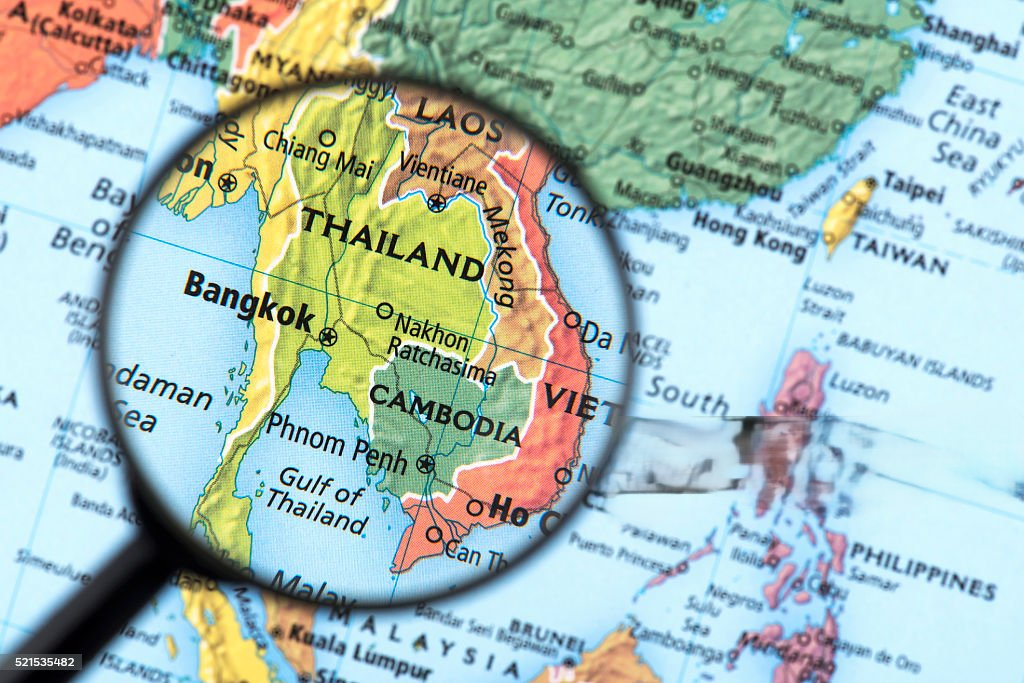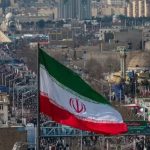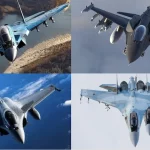The Thailand–Cambodia border conflict has reignited with deadly intensity. On 24 July 2025, the long-disputed frontier turned violent again as artillery shells, rocket attacks, drone strikes, and F-16 airstrikes battered both sides of the 817 km undemarcated border. With over a dozen civilian casualties, mass evacuations, and tit-for-tat diplomatic expulsions, Southeast Asia now faces its most serious bilateral conflict in years.
Also Read: Thai F-16 Jets Bomb Cambodian Military Targets Amid Border Escalation
This article explains the latest escalation, historical roots of the conflict, the domestic and regional triggers, the impact on civilians and trade, and what the future might hold.
| Date | Location | Incident | Casualties & Impact | Response |
|---|---|---|---|---|
| 23 Jul | Chong An Ma, Ubon Ratchathani | Landmine blast injures Thai soldiers | 1 maimed, 4 wounded | Thailand shuts 4 checkpoints, recalls ambassador |
| 24 Jul (morning) | Ta Muen Thom | Thai drone sparks gunfire; Thailand accuses Cambodia | ≥12 dead, dozens wounded | F-16 airstrikes; ambassadors expelled |
| 24 Jul (afternoon) | Surin & Si Sa Ket | Rocket attacks on civilian sites | 6 dead, 40,000 displaced | Thailand invokes Article 51 self-defence |
| 24 Jul (evening) | Bangkok & Phnom Penh | ASEAN urges calm | – | Malaysia mediates; ASEAN diplomacy activated |
Historical Background: The Preah Vihear Dispute
Preah Vihear Temple and Escarpment
- 1907 Map Controversy: A French map gave Cambodia control of the temple, despite earlier watershed agreements favoring Thailand.
- 1962 ICJ Verdict: Cambodia awarded the temple; adjacent land left ambiguous.
- 2013 ICJ Clarification: Full sovereignty over the surrounding promontory granted to Cambodia.
- 2008–2011 Armed Clashes: UNESCO heritage listing reignited tensions, killing dozens and displacing thousands.
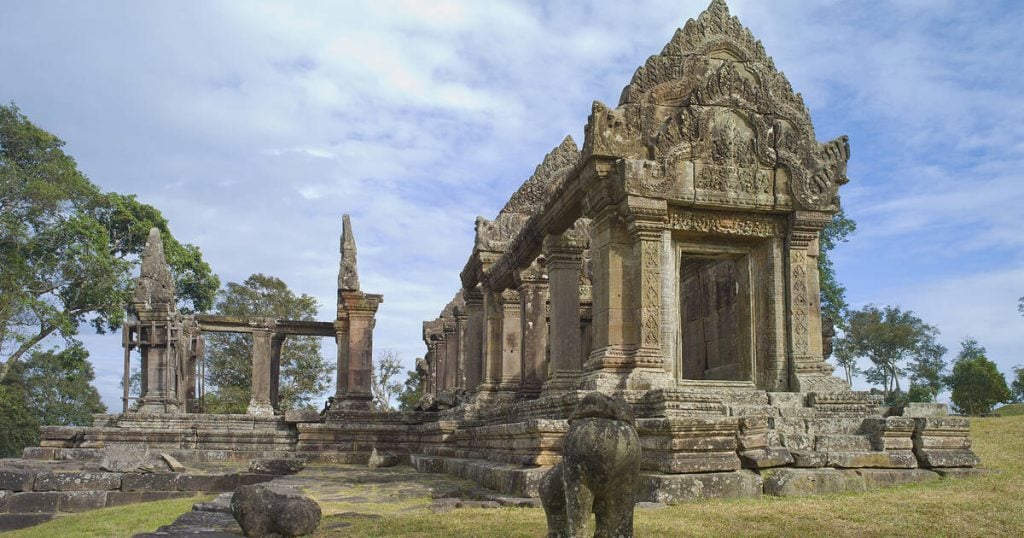
Unfinished Border Demarcation
- Only two-thirds of colonial-era border pillars have been verified.
- The Joint Boundary Commission (JBC) resumed in June 2025 but Sector 6 (including Ta Muen Thom) remains unresolved.
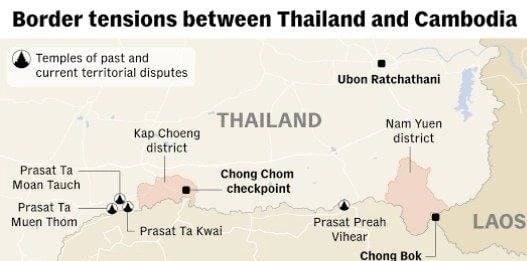
What Is Driving the Current Border Conflict?
Stalled Border Negotiations
- Cambodia prepares another ICJ case; Thailand insists on bilateral talks under the 2000 MoU.
- Talks broke down after Thailand’s PM Paetongtarn was suspended over leaked conciliatory remarks.
Military Posturing and Provocations
- Thailand deployed F-16s under the 2011 Chakrabongse Plan.
- Both sides accuse each other of drone incursions and trench-building near the flashpoint.

Domestic Political Pressures
- In Thailand, nationalists accuse the interim cabinet of territorial surrender.
- In Cambodia, PM Hun Manet leans on military strength to prove his leadership, promising retaliation if provoked.
Cross-Border Smuggling and Armed Gangs
The Dangrek escarpment is a hub for illegal trade that fuels violence:
- Rosewood smuggling by armed groups.
- Methamphetamine trafficking by Golden Triangle syndicates.
- Scam centers in Cambodia that lure Thai youth into forced digital labor.

Government Responses and Diplomatic Moves
Official Statements (24–25 July)
| Country | Key Messages | Platform |
|---|---|---|
| Thailand | “Artillery on civilians… ready to escalate.” | Press briefings |
| Royal Thai Army | “Targeted military sites under self-defence.” | HQ conference |
| Cambodia | “Brutal aggression… we will strike back.” | MoD statement, social media |
| Hun Manet | “Fully prepared for combat.” | Facebook Live |
Diplomatic Actions
- Ambassadors expelled within 36 hours.
- ASEAN mediation led by Malaysia, no emergency summit yet.
- Upcoming JBC round suspended indefinitely.
Regional and Global Reactions
ASEAN
- Malaysia and Vietnam urge restraint.
- Other members mostly silent due to ASEAN’s non-interference principle.
China and the United States
- China: Cautious neutrality to protect BRI and Mekong projects.
- U.S.: Urges restraint citing threats to regional partnerships.
Neighbours
- Laos boosts security at the tri-border area.
- Vietnam monitors potential refugee inflows.
Civilian Impact and Humanitarian Fallout
Displacement and Evacuations
- Over 40,000 civilians evacuated in Thailand.
- Cambodian villages suffer blackouts and disrupted rice planting.
Economic and Social Disruptions
| Sector | Immediate Impact | Long-Term Risk |
|---|---|---|
| Trade | Checkpoints shut; goods stuck | Cambodian exports hit; Thai SMEs disrupted |
| Tourism | Temple sites closed | Preah Vihear tourism collapse |
| Migrant Labor | Thai deportations rising | Loss of remittances, trafficking risk up |
Human Rights Concerns
- Accusations of civilian zones being shelled and hospital bombings.
- Access for independent observers remains restricted.
What Comes Next? Scenarios and Forecasts
| Scenario | Likelihood | Key Signs | Possible Mediators |
|---|---|---|---|
| Cease-fire & JBC Resumes | Moderate | Checkpoints reopen; photo-ops of joint patrols | ASEAN, China |
| Frozen Conflict | High | Ongoing evacuations, propaganda | UN shuttle diplomacy |
| Wider Escalation | Low to Moderate | Heavy artillery moved; troops mobilized | UNSC, U.S.–China dialogue |
Conclusion: Borderlines, Nationalism & the Risk of Another War
The Thailand–Cambodia border dispute is not just a product of outdated colonial maps—it is now fueled by nationalist politics, stalled diplomacy, and transnational criminal networks. The 2025 border flare-up is the most serious since the 2008–2011 crisis, but also potentially more dangerous given new drone warfare and regional instability.
To prevent another protracted war, ASEAN diplomacy, international legal mechanisms, and a renewed push for boundary demarcation are critical. The alternative—continued clashes and deepening mistrust—risks making the frontier a permanent fault line in Southeast Asia’s security landscape.

